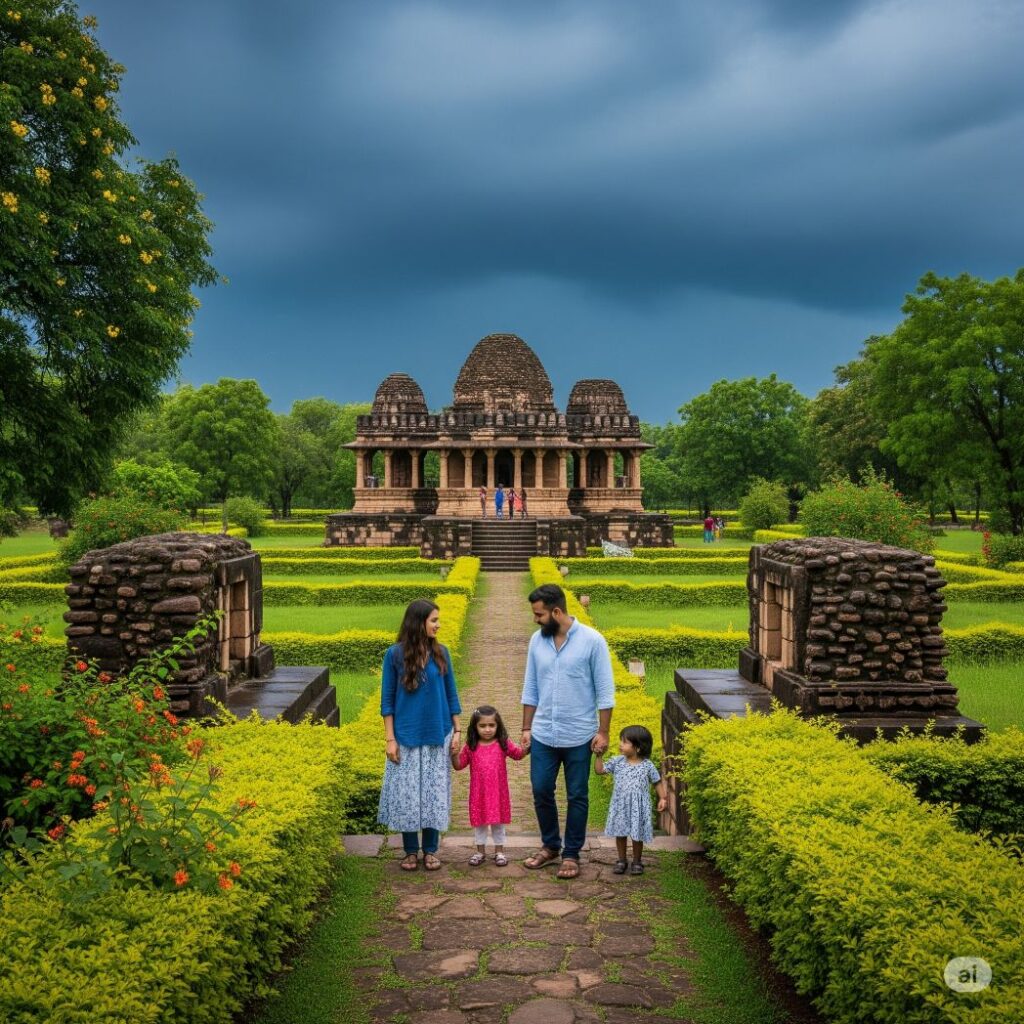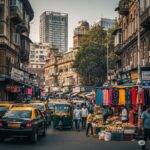Tired of battling hordes of tourists, sky-high prices, and pre-booked everything? What if we told you there’s a secret to unlocking a richer, more authentic, and budget-friendly travel experience across the incredible diversity of India? It’s time to flip the script and embrace the off-season travel in India. While everyone else is home, tied to school calendars and peak holiday rushes, you could be savoring a destination at its own pace, connecting with its culture on a deeper level, and snagging incredible deals. Forget the FOMO of peak season; the real travel wisdom lies in venturing out when the crowds have thinned. Let’s explore how embracing the off-season across India can be your strategic advantage to truly discover its hidden gems.
Benefits of Off-Season Travel in India
- Deeper Cultural Immersion: From bustling cities to quiet villages, the off-season provides unparalleled opportunities to witness the daily life of India. Engage with locals without the tourist filter, participate in authentic festivals or rituals (if they fall during this time), and gain a profound understanding of India’s rich tapestry.
- Incredible Deals: Expect significant discounts on accommodations, flights, and even local transport. This allows you to extend your trip, indulge in unique experiences, or simply save money for future adventures.
- A Truly Relaxed Experience: Escape the queues at iconic landmarks, enjoy serene landscapes without the noise of large crowds, and savor the peaceful ambiance of your chosen destination.
- Unique Perspectives & Hidden Charms: Many destinations reveal a different kind of beauty during their off-season. Think misty mountains, rain-washed historical sites, or vibrant local celebrations that occur outside the main tourist flow.
Off-Season across India: Unique Stays & Experiences Await
India’s diverse climate creates unique off-seasons across its states. Here’s a wider look at what awaits:
North India:
- Delhi:
- Off-Season: June to September (Hot and Humid)
- What to do: Explore Delhi’s historical monuments in relative peace early in the morning or late in the afternoon. Enjoy indoor experiences like museums (National Museum, National Rail Museum), art galleries (National Gallery of Modern Art), and culinary tours focused on indoor dining. Stay in heritage havelis offering traditional hospitality and respite from the heat.
- Unique Stay: Consider a stay in a restored heritage haveli in Old Delhi for an immersive cultural experience.
- Uttar Pradesh (Agra & Varanasi):
- Off-Season: June to September (Hot and Humid)
- What to do (Agra): Witness the Taj Mahal in the early morning mist or under a dramatic monsoon sky with fewer crowds. Explore Agra Fort and Fatehpur Sikri with more space.
- What to do (Varanasi): Experience the spiritual heart of India during a less crowded time. While the heat can be intense, the monsoon brings a unique energy to the ghats. Enjoy boat rides on the Ganges with fewer tourists and witness the Ganga Aarti in a more intimate setting.
- Unique Experience: Attend a classical music performance or a traditional dance recital in Varanasi, often easier to access during the off-season.
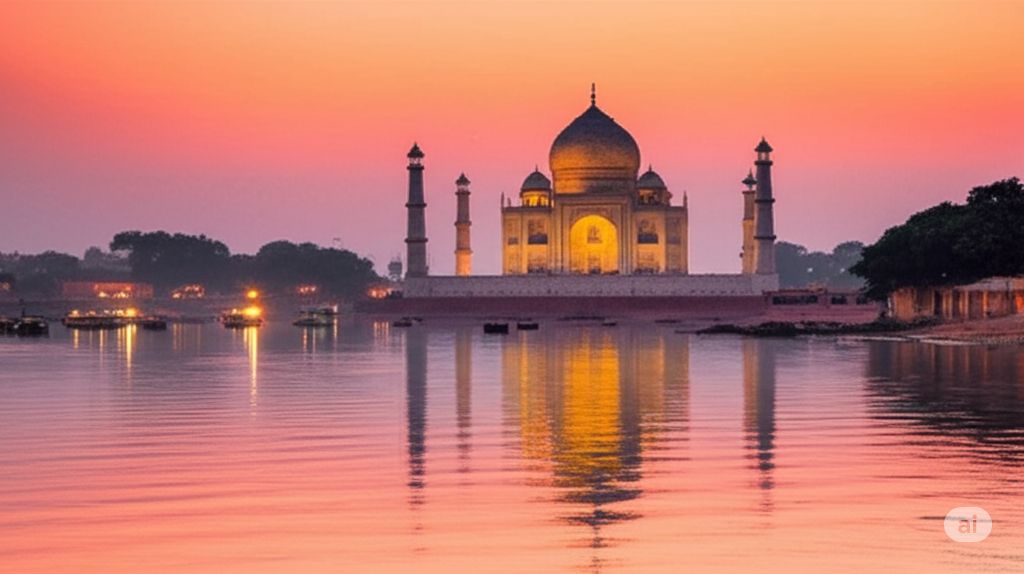
- Punjab:
- Off-Season: June to September (Hot and Humid) and December to January (Cold)
- What to do (Summer): Focus on Amritsar’s Golden Temple, enjoying the spiritual atmosphere without peak crowds. Explore the Wagah Border ceremony in the late afternoon. Enjoy traditional Punjabi cuisine at local dhabas.
- What to do (Winter): Experience the festive spirit around Lohri (January). Enjoy the winter landscape and cozy evenings.
- Unique Stay: Consider a stay in a traditional farmhouse for an authentic Punjabi experience.
- Jammu & Kashmir:
- Off-Season: November to February (Cold with Snowfall in many areas)
- What to do: Experience the magic of snow-covered landscapes in places like Gulmarg (skiing opportunities if accessible), Sonmarg, and Srinagar. Enjoy a cozy stay in a houseboat on Dal Lake amidst a serene winter setting. Witness the frozen beauty of some lakes and waterfalls.
- Unique Stay: A traditional houseboat stay on Dal Lake during the serene winter offers a unique and tranquil experience.
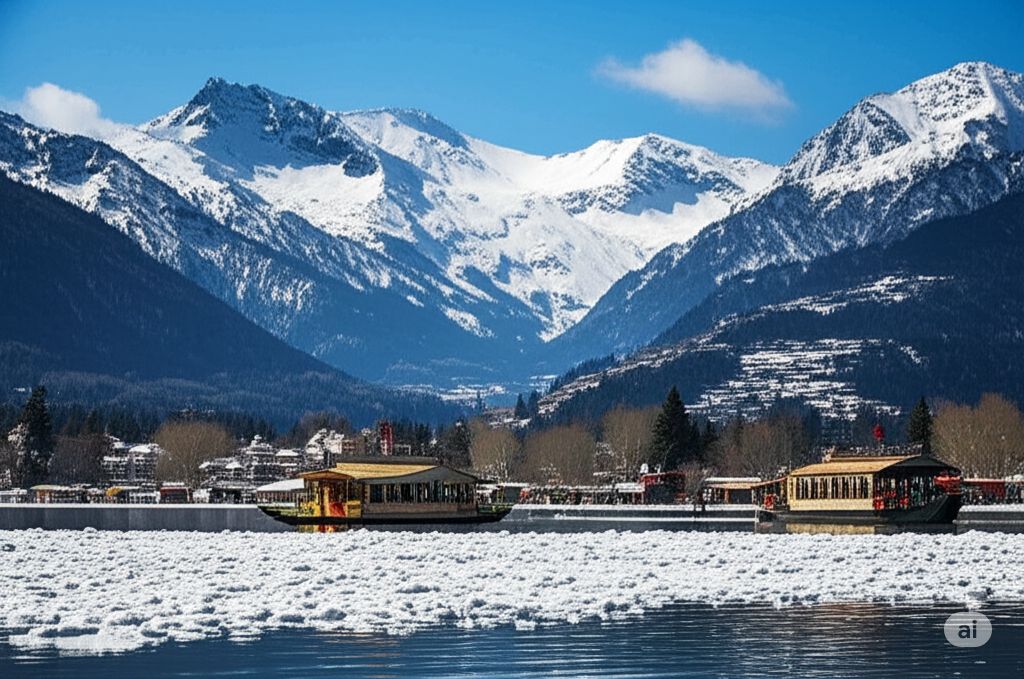
- Leh & Ladakh:
- Off-Season: November to April (Extreme Cold, Heavy Snowfall, Road Closures)
- What to do: This is the ultimate adventure off-season. While the main tourist roads (Manali-Leh Highway, Srinagar-Leh Highway) are closed, Leh is still accessible by air.
- Winter Trekking: For the truly adventurous, the famous Chadar Trek (on the frozen Zanskar River) takes place in January/February, offering an unparalleled experience (requires professional guidance and preparation).
- Frozen Landscapes: Witness a completely different, starkly beautiful Ladakh, covered in snow and ice.
- Monastery Visits: Many monasteries remain open, offering a serene and spiritual experience with very few tourists. Experience the local winter festivals like the Spituk Gustor or Dosmoche, offering a deep cultural immersion.
- Local Life: Observe the local way of life during winter, as people rely on traditional methods to cope with the cold. Enjoy Ladakhi butter tea and local cuisine in cozy homestays or guesthouses.
- Photography: The snow-capped mountains, frozen rivers, and clear winter skies offer incredible photographic opportunities.
- Unique Stay: Opt for guesthouses or homestays with traditional Bukhari (wood-burning stoves) for warmth. Some hotels might offer limited services but provide a unique winter experience.
- Unique Experience: Participate in local winter festivals, try ice skating on frozen lakes (if conditions permit and organized safely), or simply enjoy the profound silence and stillness of the Himalayas in winter.
- Himachal Pradesh:
- Off-Season (Monsoon): July to September (Heavy rainfall, occasional landslides in some areas, but lush greenery and misty views).
- What to do: While the summer crowds disperse, the monsoon reveals a serene and intensely green Himachal.
- Lush Landscapes: Witness cascading waterfalls in their full glory (e.g., Bhagsu Falls in McLeod Ganj, Jogini Falls in Manali). The valleys, especially Parvati Valley (Kasol, Tosh) and Kangra Valley (Dharamshala, Palampur), become vibrant with rejuvenated flora.
- Spiritual Retreats: Dharamshala and McLeod Ganj offer a tranquil setting for spiritual seekers amidst the misty clouds, ideal for meditation and introspection.
- Quiet Exploration: Enjoy quieter walks along the Mall Road in Shimla, or explore the tea gardens of Palampur without the usual bustle.
- Monsoon Treks (with caution): Some treks, particularly shorter ones like Triund, are popular even in monsoon for their dramatic views, but always check trail conditions and hire local guides due to slippery paths and potential for landslides. Longer, high-altitude treks are generally not recommended.
- Local Festivals: Look out for local fairs like the Minjar Fair in Chamba (July-August), which celebrates nature’s bounty and offers a glimpse into local culture.
- Unique Stay: Opt for charming homestays nestled in apple orchards in places like Manali or Kinnaur, or eco-friendly cottages that offer breathtaking views of the rain-washed valleys. Stay in restored heritage properties in Shimla or customized chalets in Jibhi.
- Unique Experience: Indulge in warm local Himachali cuisine like Siddu and Dham, perfect for the cool, wet weather. Visit natural hot springs like Vashisht to relax and rejuvenate.
- What to do: While the summer crowds disperse, the monsoon reveals a serene and intensely green Himachal.
- Off-Season (Winter): December to February (Heavy snowfall, especially at higher altitudes, many roads closed).
- What to do: Himachal transforms into a winter wonderland.
- Snow Sports: Destinations like Manali and Kufri (near Shimla) offer opportunities for skiing, snowboarding, and snow tubing. Solang Valley near Manali is popular for such activities.
- Scenic Beauty: Enjoy spectacular views of snow-capped peaks and pristine white landscapes. The air is crisp and clear, often offering better visibility of the Himalayas.
- Cozy Getaways: Curl up by a fireplace in a cozy cottage in Shimla, Manali, or Dalhousie.
- Local Culture: Experience local winter festivals. Shimla hosts an annual Ice Skating Carnival (December-February), the only natural ice-skating rink in Asia.
- Unique Stay: Luxury villas and chalets in places like Manali, Kasauli, or Jibhi offer comfortable stays with fireplaces and stunning snow views. Traditional Himachali homestays provide warmth and local hospitality.
- Unique Experience: Try your hand at ice skating, take a scenic toy train ride on the Kalka-Shimla Railway through snow-covered landscapes, or simply enjoy hot beverages and local delicacies amidst the winter chill.
- What to do: Himachal transforms into a winter wonderland.
- Off-Season (Monsoon): July to September (Heavy rainfall, occasional landslides in some areas, but lush greenery and misty views).
- Uttarakhand:
- Off-Season (Monsoon): July to September (Heavy rainfall, especially in the Garhwal region, leading to landslides and road closures in some areas; parts of Char Dham Yatra temporarily close).
- What to do: The “Devbhumi” (Land of Gods) becomes incredibly verdant and alive.
- Valley of Flowers: This UNESCO World Heritage Site is best visited in July and August when the valley is in full bloom after the monsoon rains, transforming into a carpet of vibrant alpine flowers. It’s a prime example of a destination that thrives in the off-season.
- Waterfalls & Greenery: Numerous waterfalls cascade down the hillsides in places like Mussoorie, Nainital, and around Rishikesh. The entire landscape turns a refreshing green.
- Ayurveda & Yoga: Rishikesh and Haridwar offer serene environments for yoga and meditation retreats, with fewer crowds and cooler temperatures than summer.
- Peaceful Hill Stations: Hill stations like Lansdowne, Ranikhet, and Mukteshwar provide tranquil escapes, ideal for quiet contemplation amidst nature.
- Unique Stay: Riverside resorts in Rishikesh that offer spiritual retreats, quaint homestays in serene hill stations like Lansdowne, or charming cottages in the Kumaon region.
- Unique Experience: Trekking to spots like the Valley of Flowers or Hemkund Sahib (check accessibility) which are only open during monsoon. Experience the Ganga Aarti in Haridwar or Rishikesh in a more intimate setting, or learn about traditional Kumaoni culture.
- What to do: The “Devbhumi” (Land of Gods) becomes incredibly verdant and alive.
- Off -Season (Winter): November to March (Cold, heavy snowfall in higher reaches, some roads/temples inaccessible).
- What to do: Winter in Uttarakhand is for snow enthusiasts and those seeking spiritual solace in a quieter environment.
- Skiing Hubs: Auli is India’s premier skiing destination, offering excellent slopes and breathtaking views of Nanda Devi. Other potential skiing spots include Mundali and Dayara Bugyal.
- Snow-Covered Landscapes: Hill stations like Nainital, Mussoorie, Ranikhet, and Chopta become enchanting with snow. Enjoy serene walks and cable car rides for panoramic views.
- Wildlife Safaris: Jim Corbett National Park remains open and offers excellent wildlife spotting opportunities during winter as the vegetation is less dense and animals are more active.
- Spiritual Journeys: Major pilgrimage sites like Haridwar and Rishikesh are accessible and less crowded, offering a peaceful environment for spiritual exploration. The winter abodes of some Char Dham deities (e.g., Ukhimath for Kedarnath, Joshimath for Badrinath) are also active.
- Winter Treks: Popular winter treks like Kedarkantha and Chopta-Tungnath offer challenging yet rewarding experiences in snow.
- Unique Stay: Cozy lodges or chalets in Auli, heritage hotels in Mussoorie or Nainital with mountain views, or jungle lodges near Corbett.
- Unique Experience: Learn to ski or snowboard in Auli, take a boat ride on the partially frozen Naini Lake, or embark on a snow trek for an exhilarating adventure. Experience local winter festivals like Makar Sankranti (Ghugutia).
- What to do: Winter in Uttarakhand is for snow enthusiasts and those seeking spiritual solace in a quieter environment.
- Off-Season (Monsoon): July to September (Heavy rainfall, especially in the Garhwal region, leading to landslides and road closures in some areas; parts of Char Dham Yatra temporarily close).
East India:
- West Bengal (Kolkata & Darjeeling):
- Off-Season (Kolkata): June to September (Hot and Humid)
- What to do: Explore Kolkata’s rich cultural heritage through its museums, art galleries, and historical buildings in relative comfort with air conditioning. Enjoy the vibrant culinary scene indoors.
- Off-Season (Darjeeling): June to September (Monsoon with occasional landslides) and January (Cold)
- What to do (Monsoon): Witness the misty landscapes and lush greenery. Enjoy the aroma of fresh tea and explore tea gardens in a less crowded setting (check for accessibility).
- What to do (Winter): Enjoy clear views of the Himalayas on crisp winter days with fewer tourists.
- Unique Stay (Darjeeling): Stay in a colonial-era tea estate bungalow for a nostalgic experience.
- Odisha:
- Off-Season: June to September (Hot and Humid with potential cyclones)
- What to do: Explore the temples of Bhubaneswar and Puri with fewer crowds. Witness the Rath Yatra festival (if it falls during this period, though it attracts crowds). Enjoy the coastal cuisine.
- Unique Experience: Visit the Chilika Lake during the monsoon for unique birdwatching opportunities.
- Bihar:
- Off-Season: April to June (Extremely Hot)
- What to do: Focus on historical sites like Nalanda and Bodh Gaya early in the morning or late in the afternoon. Explore indoor museums and monasteries.
- Unique Experience: Learn about the ancient history and spiritual significance of Bodh Gaya in a quieter atmosphere.
- Jharkhand:
- Off-Season: April to June (Extremely Hot)
- What to do: Explore the natural beauty of places like Netarhat and Hundru Falls during the cooler parts of the day.
- Sikkim:
- Off-Season: June to September (Monsoon with potential landslides)
- What to do: Experience the lush green landscapes and cascading waterfalls. Enjoy the tranquility of monasteries with fewer visitors (check for accessibility).
- Unique Stay: Opt for a homestay in a local village for an authentic Sikkimese cultural immersion.
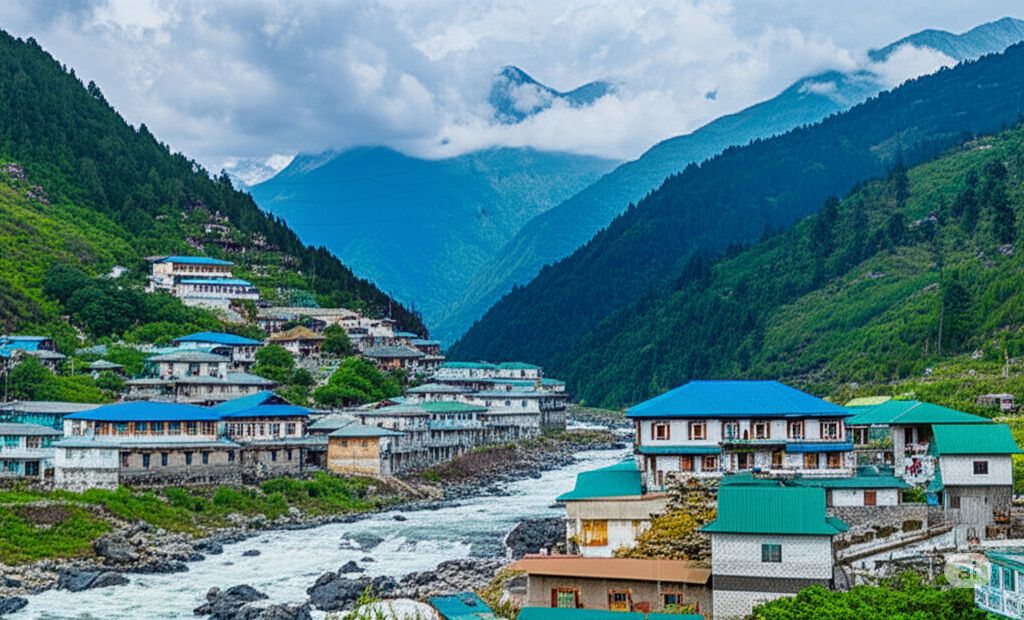
- Arunachal Pradesh, Assam, Meghalaya, Manipur, Mizoram, Nagaland, Tripura:
- Off-Season: June to September (Monsoon)
- What to do: Witness the vibrant green landscapes and numerous waterfalls in their full glory. Explore the unique cultures and traditions of these states in a more intimate setting. Enjoy trekking and nature walks where possible (check for trail conditions).
- Unique Stay: Explore tribal homestays for a deep dive into the local way of life and traditions. Experience the unique monsoon festivals (if any).
South India:
- Karnataka (Bengaluru, Hampi, Mysore, Coorg):
- Off-Season (Bengaluru): March to May (Hot)
- What to do: Explore indoor attractions like museums, art galleries, and shopping malls. Enjoy the city’s vibrant culinary scene.
- Off-Season (Hampi & Mysore): March to June (Hot)
- What to do (Hampi): Visit the magnificent ruins early in the morning or late in the afternoon to avoid the peak heat.
- What to do (Mysore): Explore the Mysore Palace and other historical sites with fewer crowds. Enjoy the cultural performances.
- Off-Season (Coorg): June to September (Monsoon)
- What to do: Enjoy the lush green coffee plantations and misty landscapes. Experience the waterfalls in their full flow.
- Unique Stay (Coorg): Stay in a coffee plantation bungalow for an immersive experience.
- Off-Season (Coastal Karnataka): June to September (Monsoon)
- What to do: Similar to the Konkan Maharashtra region, Coastal Karnataka (including places like Mangalore, Udupi, Gokarna) bursts into vibrant greenery during the monsoon. Enjoy the dramatic seascapes, explore ancient temples with fewer crowds, and witness the region’s natural beauty in its refreshed state. Waterfalls like Jog Falls (though a bit further inland, influenced by the same monsoon) are spectacular. Experience the local Tuluva culture and cuisine in a more intimate setting.
- Unique Stay: Look for homestays nestled amidst plantations or boutique resorts offering serene monsoon getaways.
- Unique Experience: Observe traditional fishing practices during breaks in the rain, and savor fresh seafood. Explore the backwaters and rivers which are lush and full during this time (boat rides may be restricted during heavy rains).
- Tamil Nadu (Chennai, Madurai, Ooty, Kodaikanal):
- Off-Season (Chennai & Madurai): May to June (Extremely Hot)
- What to do: Explore the temples and historical sites early in the morning or late in the afternoon. Focus on indoor attractions.
- Off-Season (Ooty & Kodaikanal): June to September (Monsoon)
- What to do: Enjoy the misty landscapes and lush greenery. Waterfalls will be at their peak.
- Unique Stay (Tamil Nadu): Consider a stay in a traditional Chettinad mansion for a cultural and architectural experience.
- Telangana (Hyderabad , Warangal):
- Off-Season (Hyderabad): March to June (Hot)
- What to do: Explore historical sites and museums during the cooler parts of the day. Enjoy the local cuisine.
- Unique Experience: Explore the Ramoji Film City with fewer crowds.
- Off-Season(Warangal): March to June (Hot)
- What to do: Visit the historical temples and forts during the early morning or late afternoon.
- Andhra Pradesh (Visakhapatnam, Tirupati, Araku Valley):
- Off-Season: April to June (Extremely Hot) and July to October (Monsoon)
- What to do (Hot Season): Focus on exploring coastal cities like Visakhapatnam early in the morning or late in the afternoon. Visit indoor attractions like the INS Kursura Submarine Museum, Visakha Museum, or relax at the city’s cafes. In Tirupati, plan temple visits during non-peak hours. For hill stations like Araku Valley and Lambasingi (known as ‘Kashmir of Andhra’), even in summer, they offer a relatively cooler escape compared to the plains; explore coffee plantations and tribal museums indoors.
- What to do (Monsoon): The monsoon transforms Andhra Pradesh into a lush, green landscape, especially the Eastern Ghats.
- Visakhapatnam & Araku Valley: The drive from Vizag to Araku Valley becomes incredibly scenic with numerous waterfalls appearing. Borra Caves (near Araku) offer a cool, captivating experience underground, largely unaffected by surface rains. Enjoy the refreshed beaches of Vizag (though swimming might be restricted).
- Waterfalls: Famous waterfalls like those near Maredumilli (Jalatharangini, Amruthadhara) and the majestic Talakona Waterfall (near Tirupati) swell impressively, offering stunning vistas.
- Spiritual Journeys: Temple towns like Tirupati (Tirumala Venkateswara Temple) remain active, offering a peaceful spiritual journey with fewer queues.
- Unique Stay: Consider boutique hotels with sea views in Visakhapatnam, or cozy guesthouses/plantation stays in Araku Valley that embrace the misty, green ambiance of the monsoon.
- Unique Experience: Participate in local festivals that might fall during the monsoon, offering a glimpse into authentic Andhra culture. Enjoy the unique bamboo chicken in Araku Valley, a regional delicacy best savored in its natural setting
- Puducherry (Pondicherry):
- Off-Season: June to September (Monsoon) and April to May (Hot and Humid)
- What to do (Monsoon): Experience the charm of the French Quarter in the rain, with fewer tourists. Explore Auroville in a more serene setting. The monsoon brings a refreshing touch to the coastal town. Enjoy indoor activities like visiting cafes, boutiques, and art galleries.
- What to do (Summer): Explore the beaches and historical areas early in the morning or late in the afternoon.
- Unique Stay: Choose from the numerous charming French-style guesthouses for an authentic Pondicherry experience.
- Unique Experience: Indulge in the fusion of French and Tamil cuisine at less crowded restaurants. Enjoy a peaceful cycling tour through the quieter streets.
- Kerala:
- Off-Season: June to August (Southwest Monsoon) and September to November (Northeast Monsoon – less intense)
- What to do (June-August): This is the prime time for Ayurvedic treatments as the cool, moist climate is considered ideal. Enjoy the backwaters in their serene, rain-kissed beauty. Witness the vibrant green landscapes and enjoy significant discounts on accommodations. Explore the hill stations like Munnar and Wayanad with misty views and fewer crowds. Waterfalls will be at their peak.
- What to do (September-November): The intensity of the monsoon decreases, and the weather becomes pleasant with occasional showers. This is a good time for backwater cruises, visiting beaches, and exploring cultural sites without the peak season rush.
- Unique Stay: Choose from traditional houseboats, serene Ayurvedic resorts, or charming plantation stays for an immersive Kerala experience.
- Unique Experience: Witness the vibrant Onam festival (typically in August/September), which offers a rich cultural experience. Enjoy traditional Kathakali performances in a more intimate setting.
West India:
- Rajasthan:
- Off-Season: June to September (Monsoon and intense heat)
- What to do: While the heat can be challenging, this is when you’ll find the best deals on heritage hotels. The monsoon also brings a unique charm to the desert landscapes with lush greenery and fewer crowds at major forts and palaces. Explore indoor museums, enjoy traditional Rajasthani cuisine in less crowded restaurants, and witness the beauty of the rain-washed architecture.
- Unique Stay: Experience the opulence of a heritage haveli or a desert camp offering cultural programs even during the quieter monsoon. Some offer special monsoon packages.
- Unique Experience: Witness the vibrant Teej and Gangaur festivals (if they coincide with your visit) which, while local, offer a unique cultural insight without peak tourist crowds. Enjoy a traditional Rajasthani cooking class focused on monsoon-friendly dishes.
- Haryana:
- Off-Season: April to June (Extremely Hot) and December to January (Cold)
- What to do (Summer): Explore the historical sites around Kurukshetra and Panipat early in the day. Visit the Sultanpur National Park for birdwatching (check for best times based on migratory patterns).
- What to do (Winter): Enjoy the rural landscape and visit farm stays for an authentic Haryanvi experience.
- Unique Stay: Consider an agri-tourism stay for a glimpse into rural life and Haryanvi culture.
- Gujarat:
- Off-Season: June to September (Monsoon) and March to May (Hot)
- What to do (Monsoon): Witness the vibrant greenery in places like Saputara. Explore the historical sites of Ahmedabad and Vadodara with fewer crowds. Enjoy the coastal areas (with caution during heavy rains).
- What to do (Summer – early mornings/late evenings): Explore the archaeological site of Dholavira or the temples of Dwarka and Somnath during the cooler parts of the day.
- Unique Stay: Consider staying in a traditional “Bhunga” (cylindrical house) in the Kutch region for a unique cultural experience (best explored outside the peak monsoon for accessibility).
- Maharashtra (Mumbai, Pune, Aurangabad, Nashik, Malshej Ghat, Lonavala & Khandala):
- Off-Season (Mumbai & Pune): March to May (Hot and Humid)
- What to do: Explore indoor attractions, enjoy the culinary scene, and catch cultural events.
- Off-Season (Aurangabad): March to June (Hot)
- What to do: Visit Ajanta and Ellora caves early in the morning or late in the afternoon.
- Off-Season (Nashik, Malshej Ghat, Lonavala & Khandala): June to September (Monsoon)
- What to do: Experience the lush green landscapes, waterfalls, and misty valleys. Enjoy the scenic drives (with caution).
- Unique Stay (Maharashtra): Look for farm stays or eco-lodges in the Western Ghats during the monsoon for a refreshing getaway.
- Unique Stay: Consider a stay in a heritage hotel in Pune or a charming homestay in the vineyard regions around Nashik during the pleasant post-monsoon season.
- Unique Experience: Enjoy a quieter exploration of Mumbai’s street food scene during the initial monsoon showers, or visit the Ajanta-Ellora caves in the cooler, rain-washed environment. Explore the forts in the Western Ghats, which come alive with lush greenery and waterfalls during the monsoon (exercise caution during treks).
- Off-Season (Maharashtra Konkan Coastline):
- Off-Season: June to September (Monsoon)
- What to do: The Konkan coast, with its pristine beaches and lush landscapes, transforms into a vibrant green paradise during the monsoon. While swimming might be restricted, the beauty of the rain-washed beaches, cascading waterfalls (like those near Amboli or Thoseghar), and misty hills is unparalleled. Explore ancient forts like Sindhudurg, enjoy the local Malvani cuisine, and experience the tranquility of coastal villages like Alibaug, Murud, or Dapoli without the usual tourist rush.
- Unique Stay: Opt for a comfortable homestay in a coastal village or a resort overlooking the rain-fed Arabian Sea. Many eco-friendly resorts offer special monsoon packages.
- Unique Experience: Witness the unique local festivals that occur during this time, or simply enjoy the serene walks on empty beaches, collecting seashells, and breathing in the fresh, rain-soaked air. Visit mango orchards (though fruits are harvested before monsoon, the lushness is beautiful).
- Daman & Diu:
- Off-Season: June to September (Monsoon) and March to May (Hot)
- What to do (Monsoon): Enjoy the quieter beaches and the lush green surroundings. Explore the Portuguese colonial architecture in Daman and the historical sites in Diu with fewer tourists. The monsoon rains can bring a refreshing change to the landscape.
- What to do (Summer – early mornings/late evenings): Explore the forts, churches, and beaches during the cooler parts of the day.
- Unique Stay: Look for heritage hotels in Daman or beachfront resorts in Diu offering off-season discounts.
- Unique Experience: Savor the unique blend of Portuguese and Indian cuisine in a relaxed atmosphere.
Central India:
- Madhya Pradesh (Bhopal, Indore, Khajuraho, Bandhavgarh National Park, Mandu):
- Off-Season (General): April to June (Extremely Hot)
- What to do (Bhopal & Indore): Explore historical sites and museums during the cooler parts of the day. Enjoy the local cuisine.
- What to do (Khajuraho): Visit the temples early in the morning or late in the afternoon.
- What to do (Bandhavgarh): While some parks might have restricted access during the monsoon (June-September), the post-monsoon greenery (October) can be stunning with fewer crowds. Check park opening schedules.
- Unique Experience (Madhya Pradesh): Explore tribal art and culture in less crowded settings.
- Off-Season (Mandu): June to September (Monsoon)
- What to do: The historic city of Mandu, with its stunning Afghan architecture, comes alive during the monsoon. The rain washes the monuments, and the surrounding landscape turns lush green. Enjoy exploring the Jahaz Mahal, Rani Roopmati’s Pavilion, and other architectural gems in a serene, less crowded environment. The misty atmosphere adds a unique charm to the historical ruins.
- Unique Stay: Consider staying in a heritage hotel in Mandu to fully immerse yourself in the historical ambiance, especially during the peaceful monsoon.
- Unique Experience: Enjoy the panoramic views of the surrounding valleys from the viewpoints in Mandu, which are particularly stunning with the monsoon greenery and mist.
- Chhattisgarh:
- Off-Season: April to June (Extremely Hot) and July to September (Monsoon)
- What to do (Summer – early mornings/late afternoons): Explore ancient temples like the Bhoramdeo Temple (Chhattisgarh’s Khajuraho) and visit historical sites. The Sirpur heritage site is also worth exploring.
- What to do (Monsoon): Chhattisgarh’s natural beauty flourishes during the monsoon. Waterfalls like Chitrakote Falls (India’s Niagara) and Tirathgarh Falls are at their majestic best. The lush green forests and tribal culture offer a unique experience. However, some remote areas might have accessibility issues due to heavy rains.
- Unique Stay: Consider eco-tourism resorts near natural attractions or homestays in tribal villages (ensure responsible and respectful tourism).
- Unique Experience: Witness vibrant tribal festivals that may occur during the monsoon season (research local calendars). Enjoy the local cuisine, which has unique flavors and ingredients.
- Goa:
- Off-Season: June to September (Monsoon)
- What to do: Experience a different side of Goa, away from the crowded beaches. Enjoy the lush green landscapes, witness the Dudhsagar Falls in its full glory, and find incredible deals on hotels and villas. While water sports are generally closed, you can explore the inland villages, visit spice plantations, and enjoy the peaceful ambiance.
- Unique Stay: Opt for a charming Portuguese-style villa or a boutique hotel in South Goa for a tranquil, rain-kissed retreat.
- Unique Experience: Participate in local Goan festivals like Sao Joao (late June) or Ganesh Chaturthi (August/September) which offer a vibrant cultural immersion. Indulge in authentic Goan cuisine at local shacks that remain open, savoring the flavors without the usual rush.
Embrace the call of the off-season! With a little planning and an open mind, you can unlock a side of India that most tourists miss – a more authentic, serene, and budget-friendly adventure awaits
